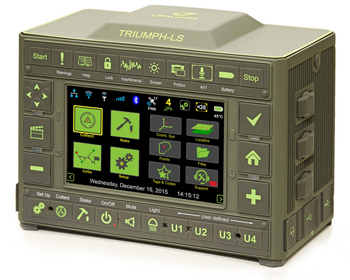Tags are used in J-Field to control connections between
collected points. Points collected with the same Tag name
are connected together by a line or curve (as the user has
selected). Points collected with the same Tag name continue
to be connected until the user ends the line. Polylines
can be ended open or closed back to the first point. Once a
Tag is ended, it can be reused for another Polyline collected
later.
The benefit of using Tags is especially evident in the J-Field
Auto Sequence. By building a list of Tags to be collected,
J-Field can automatically switch from one polyline to the
next according to the user-defined list. This is particularly
beneficial to cross-section data collection. Consider a
cross-section of a road that has a ditch on either side. The
cross-section sequence would be Left Natural Ground
(LNG), Left Top Bank (LTB), Left Ditch Flow Line (LFL), Left
Edge of Pavement (LEP), Centerline (CL), Right Edge of Pavement
(REP), Right Ditch Flow Line (RFL), Right Top Bank (RTB),
Right Natural Ground (RNG). The Auto Sequence would
increment from one line to the next based on the Tags (LNG,
LTB, LFL...RTB, RNG). Auto Sequence also allows for reversing
the sequence once complete (RNG, RTB, RFL...LTB, LNG).
Codes are used in a unique way within J-Field. Codes are
designed by the user and function similarly to layers in AutoCAD.
Codes also carry default symbol types and default
attributes. The Code “Boundary” might contain a default
circle symbol, and the attributes “Type”, “Size”, “ID Cap”. Each
point collected with the Code “Boundary” will use the circle
symbol by default, and prompt for the attributes Type,
Size and ID Cap. Upon Export to dxf (drawing exchange file)
from J-Field, Codes can be used to define the layers of the
exported polylines. When creating a Tag, you must create
its Code first. A Code may belong to several Tags. Tags and
Codes provide a very powerful data structure. When collecting
standalone points, you can also use Tag, Code and
other attributes to make your data collection easy in the
field and provide versatile documentation.
